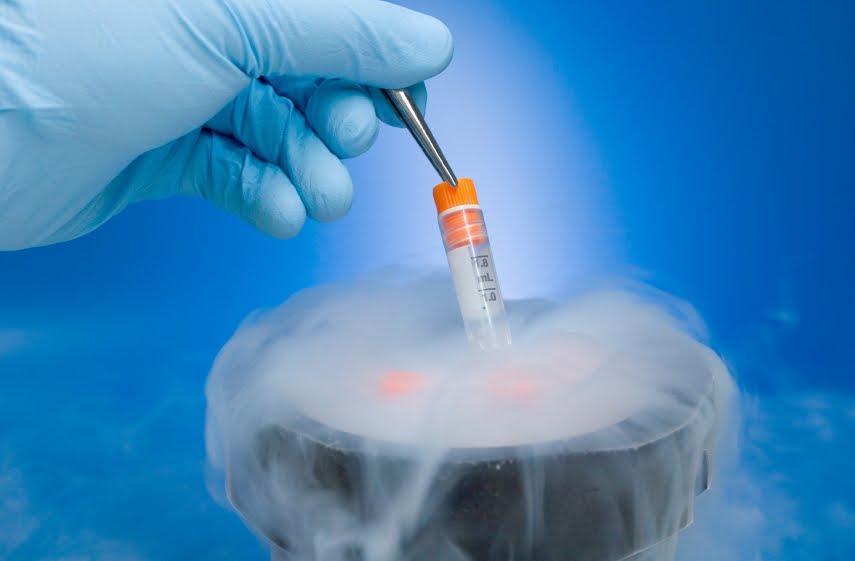OVERVIEW OF CELL LINES
A cell line is a cell that has undergone mutation and series of genetic manipulations, and will not undergo apoptosis after a limited number of passages (sub-culturing). Apoptosis is defined as programmed cell death. It is a cell death that occurs by a biologically-controlled intracellular process that involves the fragmentation and cleavage of the host cells nucleic acid (particularly the DNA). When cells from the first culture (usually taken from the organism) are used to make subsequent cultures, a cell line is established.
Immortal cell lines can replicate indefinitely due to manipulations of their genetic material and the maintenance and sustenance of optimum nutrient and environmental conditions. Cell lines are cells or cell cultures obtained after the first subculture of a primary cell culture. This primary cell culture becomes known as a cell line or sub-clone after the first subculture has taken place. Cell lines derived from primary cultures usually have a limited life span.
But as these cells are passaged, those cells with the highest growth capacity predominate. This will result in a degree of genotypic and phenotypic uniformity of the population of cells that will be produced. Such cells produced in this way are generally referred to as cell lines. Cell lines are obtained or sourced for research purposes in any of the following ways:
- Through primary culture.
- Through Passaging or sub-culturing.
- Through buying and borrowing either from already established cell collection centers such as the American Type Culture Collection (ATCC). Cell lines can also be sourced from research laboratories and institute in possession of cell lines. Cell lines obtained by borrowing are usually not too good because they can be contaminated by bacteria or mycoplasmas.
Some established cell lines include: Chinese hamster ovary (CHO), HeLa cell lines, 3T3 cell lines and BHK21 cell lines. These established cell lines can be commercially obtained and used for cell culture experimentations.
References
Alberts B, Bray D, Johnson A, Lewis J, Raff M, Roberts K andWalter P (1998). Essential Cell Biology: An Introduction to the Molecular Biology of the Cell. Third edition. Garland Publishing Inc., New York.
Alberts B, Bray D, Lewis J, Raff M, Roberts K and Watson J.D (2002). The molecular Biology of the Cell. Fourth edition. New York, Garland, USA.
Ausubel, F.M., Brent, R., Kingston, R.E., Moore, D.D., Seidman, J.G., Smith, J.A., Struhl, K., eds (2002). Short Protocols in Molecular Biology, 5th edn. John Wiley & Sons, New York.
Caputo J.L (1996). Safety Procedures. In: Freshney, R.I., Freshney, M.G., eds., Culture of Immortalized Cells. New York, Wiley-Liss, Pp. 25-51.
Cooper G.M and Hausman R.E (2004). The cell: A Molecular Approach. Third edition. ASM Press.
Davis J.M (2002). Basic Cell Culture, A Practical Approach. Oxford University Press, Oxford, UK.
Freshney R.I (2005). Culture of Animal Cells, a Manual of Basic Technique, 5th Ed. Hoboken NJ, John Wiley and Sons Publishers.
Health Services Advisory Committee (HSAC) (2003). Safe Working and the Prevention of Infection in Clinical Laboratories. HSE Books: Sudbury
Lodish H, Berk A, Matsudaira P, Kaiser C.A, Kreiger M, Scott M.P, Zipursky S.L and Darnell J (2004). Molecular Cell Biology. Fifth edition. Scientific American Books, Freeman, New York, USA.
Marcovic O and Marcovic N (1998). Cell cross-contamination in cell cultures: the silent and neglected danger. In Vitro Cell Dev Biol. 34:108.
Mather J and Barnes D (1998). Animal cell culture methods, Methods in cell biology. 2rd eds, Academic press, San Diego.
Verma P.S and Agarwal V.K (2011). Cytology: Cell Biology and Molecular Biology. Fourth edition. S. Chand and Company Ltd, Ram Nagar, New Delhi, India.
Discover more from Microbiology Class
Subscribe to get the latest posts sent to your email.





